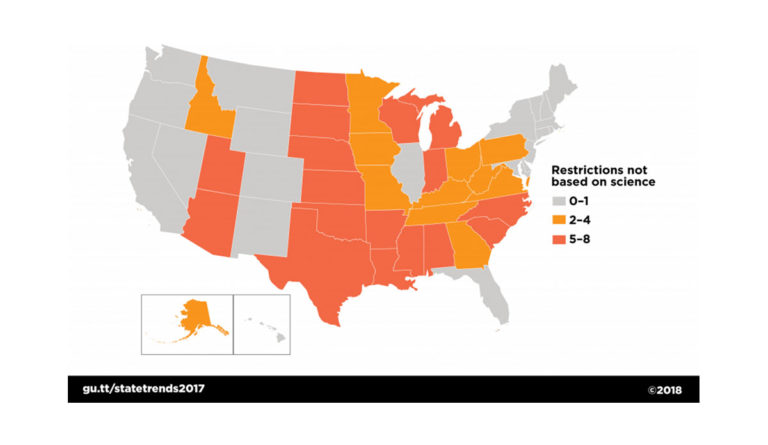Pseudoscience and Abortion Policy
Twenty-nine states, home to 88 million women, have implemented at least two abortion restrictions not backed by scientific evidence.

Read Time: 2 minutes
Published:
In 2012, when US Representative Todd Akin from Missouri was asked if abortion was justified in cases of rape, he notoriously said that pregnancy as a result of rape is rare because “the female body has ways to try and shut that whole thing down.” Arguments made against abortion, like this one, are often riddled with pseudoscience.
As the map above shows, 29 states, home to 88 million women, have implemented at least two abortion restrictions not backed by scientific evidence.
For example, Texas’s “Woman’s Right to Know” booklet, offered to patients before having an abortion, uses deceptive language to lead readers to believe that abortion increases the risk of breast cancer. The Washington Post’s Fact Checker gave this claim in the booklet three “Pinocchios” on their rating scale, meaning that there was a “significant factual error” present. The American College of Obstetricians and Gynecologists released a statement in 2009 concluding that there is “no association between induced abortion and breast cancer.”
Kentucky’s Senate Bill 5, passed in 2017, made it illegal to have an abortion after the twentieth week of pregnancy. The sponsor of the bill cited fetal pain as justification for the law, calling abortion after 20 weeks an “awful painful experience” for the fetus. However, a review of fetal pain evidence found that fetuses are unlikely to feel pain before the third trimester (around 29 weeks).
Kansas, Texas, and South Dakota have the highest number of these types of pseudoscientific restrictions with seven each.
Databyte via States Hostile to Abortion Rights, 2017. Guttmacher Institute.


